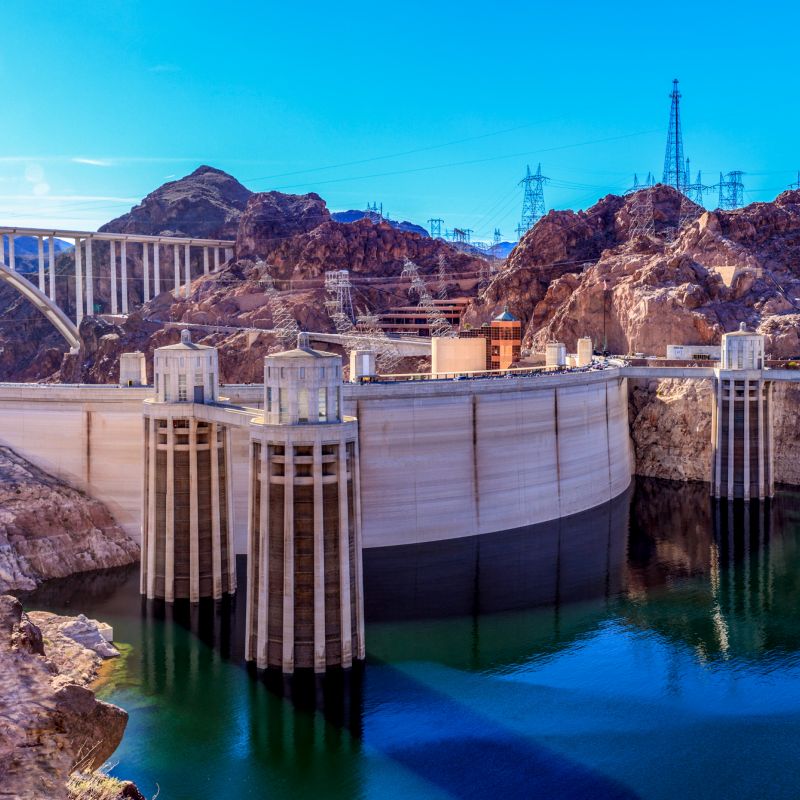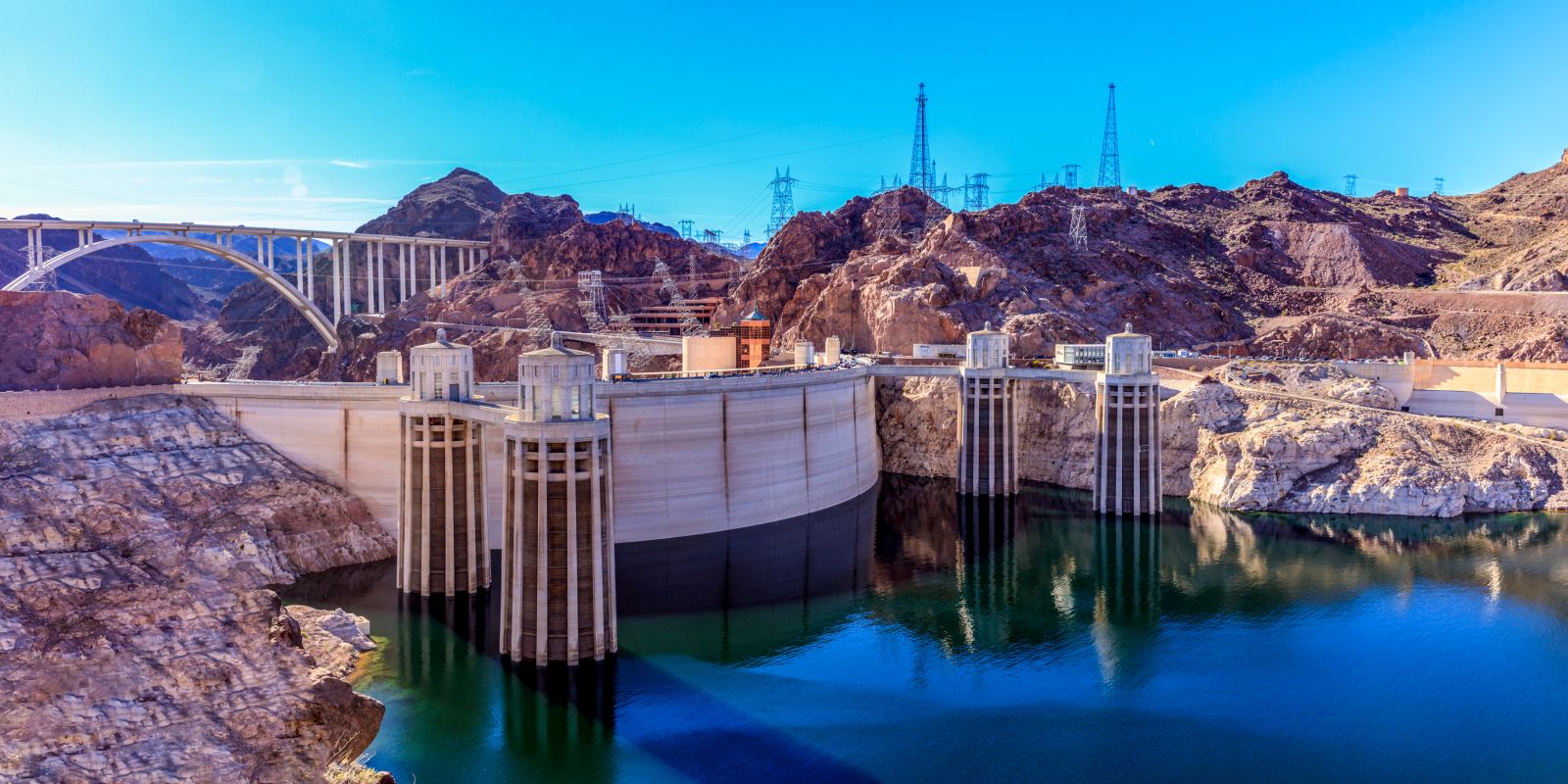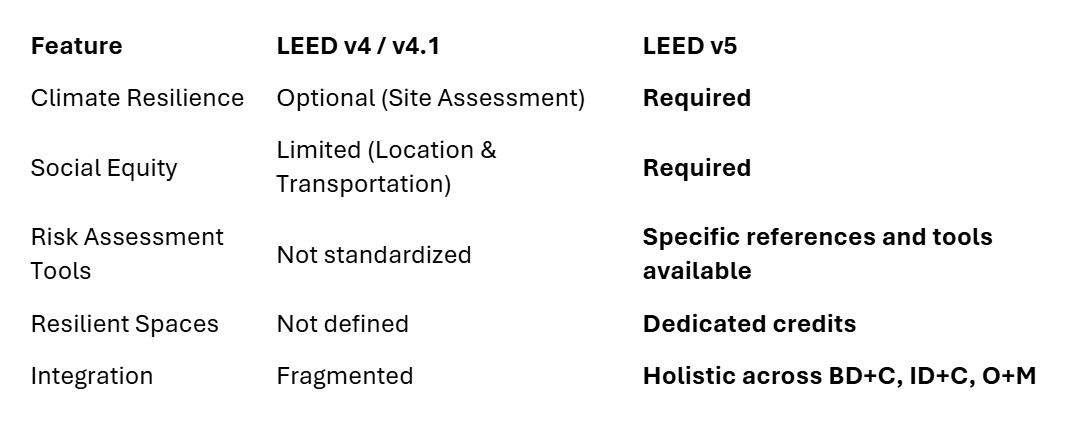Resilience in LEEDv5


Why it Matters, and How to Get it Right
Why Resilience Is Required Now
The urgency for resilience in buildings is immediate. In 2023 alone, global disaster losses reached $250–$320 billion. From wildfires and floods to hurricanes and extreme heat, climate-driven events are disrupting operations, endangering lives, and straining infrastructure. It is visible and hard to ignore the impacts.
The shift in LEED v5 mirrors this reality: resilience has moved from “nice-to-have” optional strategies to mandatory prerequisites. Every certified project, whether new construction, interiors, or existing buildings, must actively plan for and adapt to climate risks.
This isn’t just a compliance step. It’s an opportunity to design buildings that protect people, safeguard investments, and keep operating under stress, while evolving our processes and advancing the industry in step with the new rating system.

Resilience: A Core Imperative
The U.S. Green Building Council defines resilience as:
“The ability to prepare and plan for, absorb, recover from, and more successfully adapt to adverse events.”
In LEED v5, this definition becomes real through two required prerequisites across BD+C, ID+C, and O+M:
- Climate Resilience Assessment – to promote the comprehensive assessment of observed, projected, and future natural hazards for climate resilience with an aim to enhance awareness of hazards, increase transparency of risks, reduce vulnerabilities, and ensure long-term safety and sustainability.
- Human Impact Assessment – To ensure that project development is guided by a thorough understanding of the social context of the local community, workforce, and supply chain, helping to address potential social inequities.
Together, these ensure resilience isn’t an afterthought. It shapes site selection, informs design, and integrates into day-to-day operations.

How Resilience Shows Up in Each Rating System
BD+C (Building Design + Construction)
For new construction and core & shell projects, resilience is baked in from the start. The following assessments are intended to help inform the planning, design, and set up ongoing operations and maintenance for the project, right from the beginning.
- IPp1: Climate Resilience Assessment – Teams must complete a climate and natural hazard assessment to identify priority hazards (like flooding or extreme heat)
- IPp2: Human Impact Assessment – Complete a human impact assessment that draws on relevant information from demographics, local infrastructure, human use and health impacts.
- Credits like SSc4 (Enhanced Resilient Site Design) and EQc4 (Resilient Spaces) push teams further, requiring hazard-specific site design and strategies for thermal safety and passive survivability.
ID+C (Interior Design + Construction)
Here the focus is on interiors, where control of the base building is limited but resilience is still vital. IPp1, IPp2 and EQc4 adapt to tenant space, focusing on indoor air quality, HVAC reliability, and workforce equity.
O+M (Operations + Maintenance)
For existing buildings, resilience becomes part of daily practice. IPp1, IPp2, and EQc4 are all still in place, rewritten to focus on existing buildings. Plus a credit specifically intended to encourage effective hazard response plans and readiness measures to ensure safety and maintain critical operations during and after emergencies (IPc1: Operational Planning for Resilience).

What’s New Compared to LEED v4 / v4.1
The change from v4 to v5 is noticeable, moving from options on the periphery to requirements. Emphasizing the urgency of action towards resilience for all types of buildings seeking LEED certification. In short: what used to be piecemeal is now integrated and required.


A Challenge, and an Opportunity
Yes, resilience in LEED v5 raises the bar. But it also offers big opportunities:
- Smarter, more durable buildings that withstand shocks and stressors.
- Better alignment with ESG goals, investor expectations, and community needs.
- Deeper collaboration across owners, operators, designers, and occupants.
At BranchPattern, we’re excited about this shift. We’ve been testing resilience strategies for years… through design charrettes, operational assessments, and community-focused planning. Now, with LEED v5, resilience is at the forefront and we’re ready to meet the challenge.
If you’re working on a project and wondering:
- How do I meet these new requirements for a certification?
- Can I leverage these requirements to help improve my building’s value?
- Which hazards and equity factors matter most for my site?
- How do I turn compliance into real value for my building?
That’s where we can help.
Email us at ImprovingLife@BranchPattern.com to connect about how our team can guide your project through this lens of resilience (and, more importantly, make it truly future-ready).


View More Resources
Benefit from our expertise


